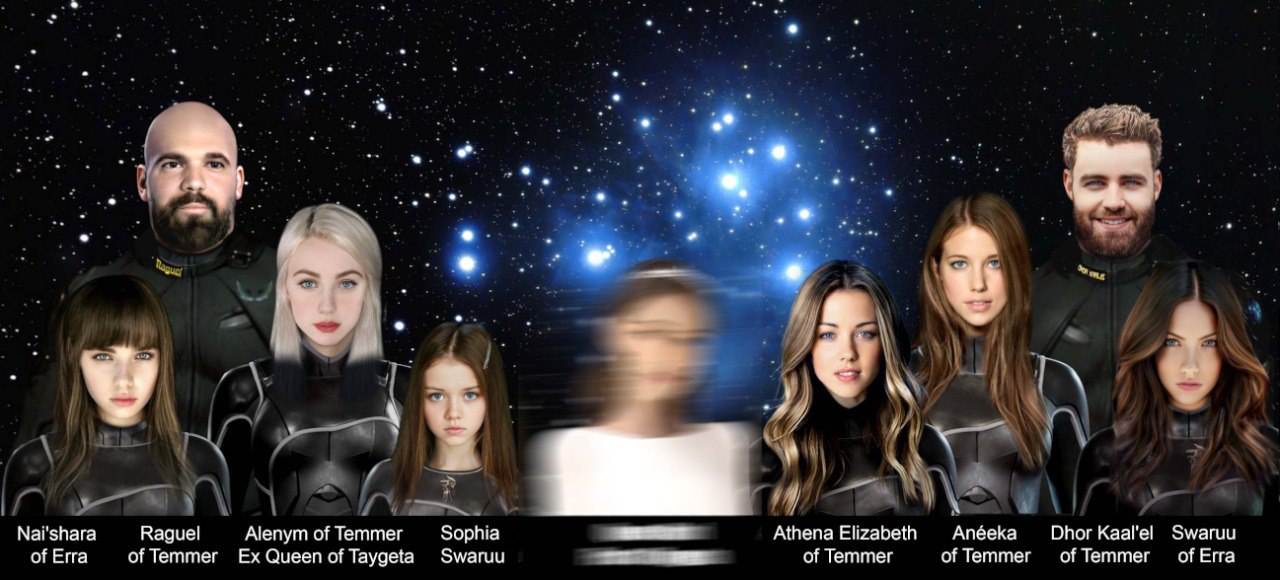Procionians - **Text only / Translated originally from Spanish**
THESE TRANSCRIPTS CAN BE ACCESSED TO MAKE TRANSLATIONS INTO ANY LANGUAGE (in text or video) ONLY WHEN THEY ARE ACCOMPANIED WITH THE OFFICIAL CREDIT TO THIS WEB PAGE AND OUR YOUTUBE CHANNELS WHERE THEY WERE FOUND.
Under no circumstances is it allowed to publish the information presented in our channels and on this page for commercial purposes (sale of books and promotional materials).
Author
ATTACHE, englishPublished
February 24, 2021Procionians - **Text only / Translated originally from Spanish**
Interviewer: The other day you told us about the planets Tau- Cete, GJ 667C- c, GJ 667C- e, and Kepler 296- e. What are these planets like? Are they similar in climate and temperature to Earth?
Anéeka: Yes. They are M-class planets of temperate climate, all very similar to Earth. They are land, i.e., sea with parts of dry land. With animal and plant life and a mild atmosphere, mostly oxygen and nitrogen. With clouds that control the climate.
Classes of planets according to temperature:
CLASS D: Planetoid or moon with little or no atmosphere.
CLASS H: Generally uninhabitable.
CLASS J: Gas giant.
CLASS K: Habitable as long as pressure domes are used.
CLASS L: Marginally habitable. With vegetation, but no animal life.
CLASS M: Terrestrial.
CLASS N: Sulfuric.
CLASS R: A rebel planet. Not as habitable as a terrestrial planet.
CLASS T: Ultra gas giant.
CLASS Y: Toxic atmosphere. High temperatures.
I have no temperature range. For me, that is or means a range as on Earth, Alfrata, Cyndriel, Erra or Temmer. It's just the average of temperatures on a planet. For example, on Earth, minus 80 degrees is a typical winter in Siberia, but it is not the average temperature. Besides, the letter classification of the planets is a human construct.
We classify them simply by temperature range, as humans do, or by the degree of evolution of their inhabitants, but not by habitability, as humans do, because the problem is that humans assume that a very cold or very hot planet cannot support life. But it can't support life like Earth or like Temmer or Erra, for example, which is essentially the same biology or biological dynamics, but it can support another kind of life adapted to those conditions.
So, again, it's humans taking for granted that there is only biological life as it is known on Earth. And to some extent, it's logical because for them there is no evidence that any other kind of life can exist, but for us it's different.
For example, a sulfuric acid atmosphere with temperatures between 100 degrees and 200 degrees can support not only life, but an advanced civilization, they just won't look like us.
Interviewer: Thank you. How interesting. And what does a civilization in a sulfuric acid atmosphere look like?
Anéeka: There are many kinds of beings in atmospheres like that. Their biology form is silicon, not carbon. They are insectoid-looking mollusk-like beings with exoskeletons. They don't mess with anyone and we are not compatible enough for exopolitical relations, but there is mutual respect.
This is an example of an advanced race that is simply incompatible with ours as they are extremely different. We do not understand well how they live or their culture for that very reason. But, like the Lyrian races, they also have thousands and thousands of variants on planets which are difficult or hostile to us.
Interviewer: The variety of the Universe is truly tireless. And who are the Procionians?
Anéeka: Procionians. There are two ways of looking at that word. One, inhabitants of Procion, the Solar System, members of the Federation, human appearance. And two, inhabitants of Procyon, third planet of Taygeta's Solar System, same as other Taygetans. Same race, same culture.
Procion, Procyon, I've seen them both used for the same thing. It should not be so. I do make a distinction.
Interviewer: Okay, thank you. We were referring to the Procionians, then.
Anéeka: This is an important note to clarify. The Procionians are more human. Active members of the Federation. Full human appearance. Pair of jeans and AC/DC t-shirt type and pass for human, spiritual and positive.
Interviewer: 5D too?
Anéeka: Yes, 5D. Procion A and Procion B is a binary system. Distance 11.46 light years away in the constellation Canis Major.
There are 7 planets, 2 inhabited. Civilization with holistic patriarchal political form. Friendly and positive relations with the council of Alcyone. In Earth orbit right now, present. Fleet of 5 ships as of this day.
Interviewer: Humans, what appearance, Nordic type?
Anéeka: Nordic copper type. That is, with skin color like dark copper with light eyes and blond hair. They pass for human, but towards the eccentric side.
Interviewer: Is that what they look like?
Anéeka: Yes. With light eyes, but they do look like that, yes. They are Canis Major not Minor. Online I see that it says Canis Minor, but I clarify that in my data they are Canis Major.
This transcript is available for download
file_downloadDownload as PDF file_downloadDownload as TEXTCommunity provided translations
This transcript does not have any community provided translations yet

